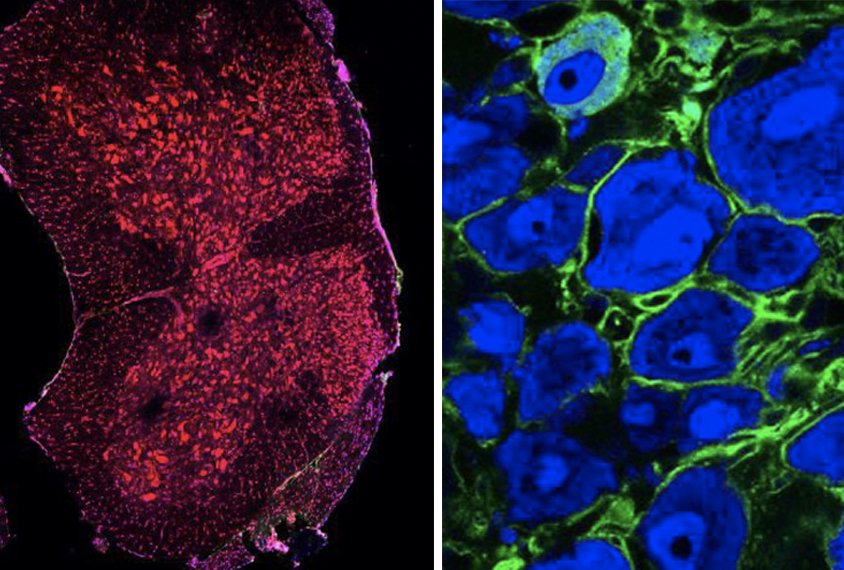
THIS ARTICLE IS MORE THAN FIVE YEARS OLD
This article is more than five years old. Autism research — and science in general — is constantly evolving, so older articles may contain information or theories that have been reevaluated since their original publication date.
Mice lacking CNTNAP2, a gene strongly linked to autism, are acutely sensitive to pain, according to a new study1. Loss of the gene makes some of their sensory neurons unusually excitable.
The findings may help explain the low pain threshold seen in some people with autism. They point to an origin for this pain in peripheral sensory neurons, such as those in the skin.
“I think this says to the autism field that more focus on the peripheral nervous system might be useful in terms of future research,” says lead investigator John Dawes, research associate in clinical neurosciences at the University of Oxford in the United Kingdom.
The results jibe with reports that other autism genes — including SHANK3 and MECP2 — perform important functions in peripheral sensory neurons and in touch sensation.
“This [study] is exciting to me because it provides more support for the notion that autism-associated genes are involved in controlling the intrinsic properties of primary sensory neurons,” says David Ginty, professor of neurobiology at Harvard University, who was not involved in the work.
Painful pokes:
Mutations in CNTNAP2 are implicated in autism. Antibodies to CASPR2, the protein encoded by this gene, are also linked to the condition.
CASPR2 antibodies crop up in some people with chronic pain conditions, such as Morvan’s syndrome. Decreasing the number of the antibodies can alleviate pain.
In the new study, Dawes and his colleagues isolated the antibodies from two people with chronic pain syndromes and injected them into mice.
These mice are hypersensitive to painful pressure: They flick away their limbs more readily than controls do when poked with a pointed piece of plastic.
The antibodies in the mice accumulate on neurons that relay sensory information to the spinal cord, but not in the brain or spinal cord, the researchers found. The distribution suggests the antibodies produce pain sensitivity through peripheral neurons.
The neurons show no signs of inflammation or damage but have unusually small amounts of Kv1.1, a potassium channel in the cell membrane. Kv1.1 channels ordinarily open after a neuron fires, helping to turn the neuron back off.
Loss of these channels essentially removes a crucial brake on neuronal excitability, Dawes says. “It’s now allowing those pain-sensing neurons to become active to lesser amounts of stimulus.”
Excitable cells:
Mice missing both copies of CNTNAP2 — an autism mouse model — are also abnormally sensitive to pain, the team found. They are similarly reactive to injections of a chili-pepper ingredient, capsaicin, into their hind paws. Some of their sensory neurons have a paucity of a potassium channel called Kv1.2.
Some of these neurons respond more readily than those in controls to a variety of stimuli, including painful pinches and capsaicin injection, the researchers found.
The findings, which appeared 21 February in Neuron, suggest that loss of CNTNAP2 and CASPR2 leads to pain hypersensitivity by decreasing the number of Kv1 channels, leading to unchecked neuronal activity.
“I think it’s very interesting,” Lior Brimberg says of the work. Brimberg is assistant professor of autoimmune, musculoskeletal and hematopoietic diseases at the Feinstein Institute for Medical Research in New York, and was not involved in the new study.
Some women who have children with autism have CASPR2 antibodies in their blood. By injecting these antibodies into mouse embryos, Brimberg and her colleagues found that they interfere with brain development and trigger behaviors reminiscent of autism.
Brimberg would like to explore whether the antibodies also interfere with the development of peripheral sensory neurons and lead to sensory sensitivities in the mice.
By joining the discussion, you agree to our privacy policy.